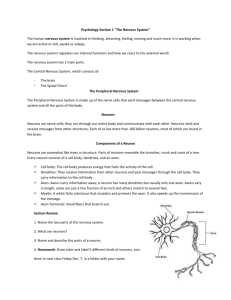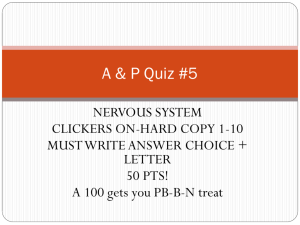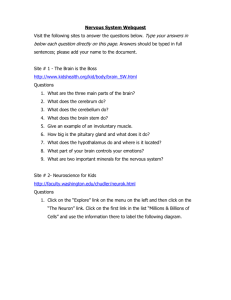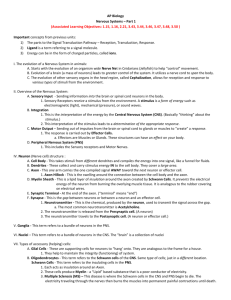Nervous System Introduction
advertisement
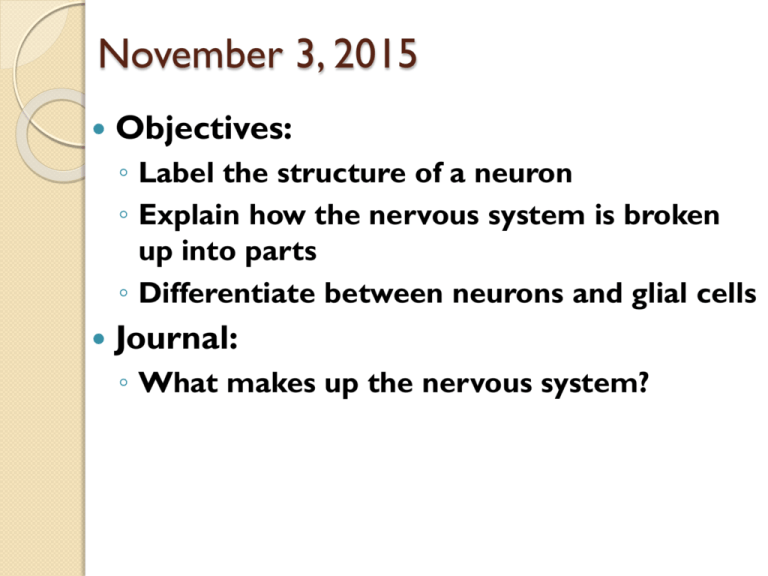
November 3, 2015 Objectives: ◦ Label the structure of a neuron ◦ Explain how the nervous system is broken up into parts ◦ Differentiate between neurons and glial cells Journal: ◦ What makes up the nervous system? Nervous System Functions of the Nervous System: Long-term memory Short-term memory Thinking and decision making Interactions with the world Parts of the Nervous System Central Nervous System (CNS) ◦ Made up of the brain and spinal cord ◦ Controls all basic bodily functions and responds to external changes Peripheral Nervous System (PNS) ◦ Made up of all the nerves in the body ◦ Connects the CNS to the rest of the body Motor System Part of the peripheral nervous system Carries out the orders from the brain and spinal cord Made up of two branches: ◦ Somatic Nervous System Controls skeletal muscle Under conscious control ◦ Autonomic Nervous System Controls smooth muscle, cardiac muscle, and glands Not under conscious control Parts of the Autonomic Nervous System Parasympathetic ◦ Resting and digesting branch ◦ Deal with normal body functions Sympathetic ◦ Body’s alert system that kicks in when you are in danger ◦ Fight or flight response Nervous Tissue Made up of: ◦ Neurons: carry out control functions, amitotic ◦ Neuroglia also known as Glial Cells: support cells for the nervous tissue, able to divide Glial Cell Types in CNS: Astrocytes: metabolic and structural support cells for the nervous tissue Microglia: remove debris Ependymal cells: cover the lining of cavities Oligodendrocytes: make a lipid insulation called myelin Glial Cell Types in PNS: Schwann cells: make myelin for the PNS Satellite cells: support cells Neuron Parts Neuron body: functions in cell metabolism Dendrites: receive signals from the environment and other cells Axon: generates and sends signals to other cells Axon terminal: connects to a receiving cell Synapse: space between the axon terminal and the receiving cell ◦ Called a neuromuscular junction if the receiving cell is a skeletal muscle cell Myelin sheath: lipid insulation that covers parts of the axon Nodes of Ranvier: bare spots between the myelin Neuron Classification Neurons can be classified by either structure or function Neuron Structural Classification Bipolar: one dendrite and one axon Multipolar: many dendrites and one axon Unipolar: has two projections extending from the same end of the neuron body Neuron Function Classification Sensory neurons: input neurons Motor neurons: output neurons Interneurons: carry information between neurons





